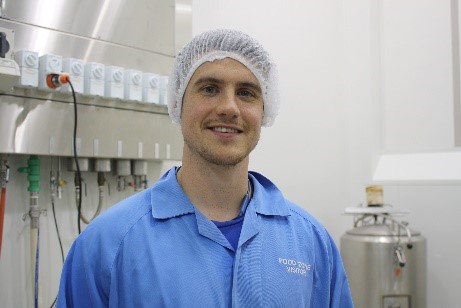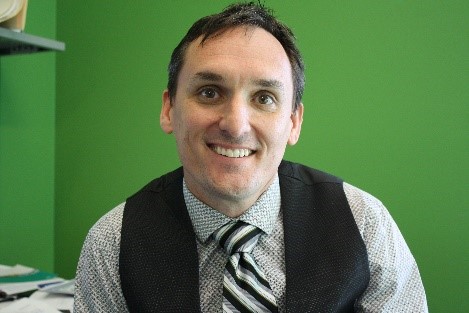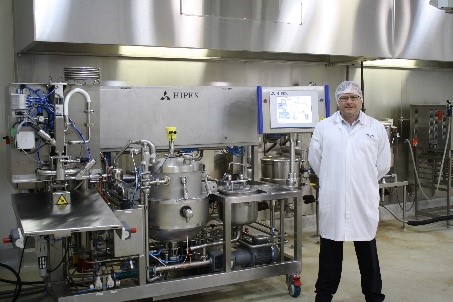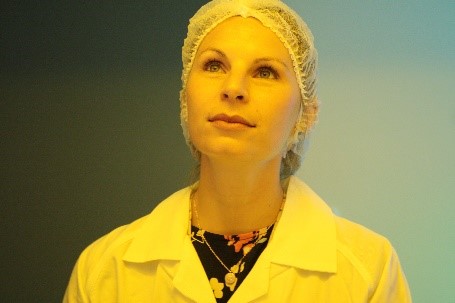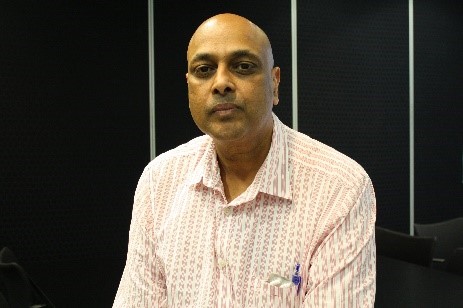Food pilot plant: Making food dreams come true
In the heart of suburban Brisbane is a place where scientists devote thousands of hours of research into turning food dreams into reality.
This episode of Turf ‘n’ Surf looks at how the Queensland’s Department of Agriculture and Fisheries’ food pilot plant at Coopers Plains, one of only two of its type in Australia, turns recipes into ‘must have’ items for the weekly shopping trip.
You’ll hear from the plant’s director Ben Baldwin, its manager Paul Burt, food sensory scientist Philippa Lyons, Andy Kelly from Queensland their probiotic juice drink company PERKii and Queensland’s Department of Agriculture and Fisheries food science liaison Ross Naidoo.
Find out how the food pilot plant makes food dreams come true.
Meet our guests
Transcript
Program intro: Welcome to Turf and Surf powered by Queensland’s Department of Agriculture and Fisheries. Shaping and protecting food and fibre for tomorrow’s Queensland.
Host: When you’re at the supermarket doing your weekly grocery shop, do you ever stop and think, how do they make my favourite sauce, or how did they come up with that recipe for that chocolate ice-cream?
The answer lies in the thousands of hours of research in development by scientists who then put it to the test in special research plants.
Hello, I’m Fidelis Rego and in this episode, we’ll visit Queensland’s only complete food pilot plant run by the Department of Agriculture and Fisheries.
We’ll talk to the scientists who test recipes, run trials with consumers and work with companies to help them get their idea from a recipe book to the supermarket shelves.
The place where food dreams become reality lies in the most unlikely of places, right in the heart of suburban Brisbane. The Department of Agriculture and Fisheries operates a food pilot plant in conjunction with the CSIRO. The Director, Ben Baldwin, says the Coopers Plains facility is one of only two of its type in Australia.
Ben Baldwin: Well I guess the one thing that we offer is a, almost a one stop shop, where if you have a product that you want to actually create and take to market you can come here and you know set it all up and get a bit of a, get methodologies over commercial recipes and then a manufacturing process and we can even give you a small level, amount of product that you can actually take out and take for potential investors or the bank or someone along those lines or even, or clients.
So I guess the, probably the best example that we could give if you run it through the process, is your grandmother’s chilli sauce that you like.
So it’s something that you’ve decided that actually this is quite nice, I’d actually like to take this to market and do something with it. So you bring it in here and we have a look at your recipe and the food technologists will pull it apart and do what they need to do to make sure that it becomes a commercial recipe.
So it can handle some of the larger pieces of equipment and stirring mechanisms of that. But then we take it to a sensory lab and where we get consumers, consumer panels to assess it. So to make sure that it’s, that the wider market likes it and it’s not just your family that likes it.
So then at that stage you’ve got a commercial project, you’ve got a commercial recipe, you’ve got, you know that other people are going to like it. So then we can take it into the larger pilot plant and scale it up. So then you have a process that you’ll know will end up with a commercially viable product that people love.
Host: Paul Burt is the plant manager.
Paul Burt: So we’ve got five processing bays, they’re individual, all have the filtered air, positive air pressure so we can keep a hygienic status. So each of the rooms can operate on a variety of products so we can take a range of commodities.
The facility itself also includes its own cold room, store, raw materials store and we’re registered with Safe Food Queensland at the moment so we can actually produce food product under regulation status.
Host: So what does that actually mean on a typical day? You’ll have clients come in, people will want to test their products on a commercial scale, and what do they actually do?
Paul Burt: So a lot of the clients will come through. They’ll have their formulations. So they may have developed it in conjunction with our product development team or they may have done it by themselves. It really does depend on their capabilities.
So when they come through here they want to put those processes and those formulations through a pilot scale process that will mimic what's going to happen when they launch it into their own facilities and their own machinery, and that will let them really get an idea of what's going to happen to the product throughout it and make some judgement calls on raw materials, formulations, if they need to go back and rework it or if more study is necessary.
Host: And you’ve got a lot of scientists on staff who can deal with the sensory and the consumer experience and look at the end point in the marketing side of things as well. But you’ve also, in terms of the equipment, you’re standing next to a bespoke piece of equipment for this facility. Can you explain what that is?
Paul Burt: So the unit we’re standing next to at the moment is a UHT pasteuriser. It’s a bespoke unit we had designed by a company in Melbourne, Hipex. And what this unit does is thermally process any food liquid products, pastes, purees or anything else we want to manufacturer from about 65 degrees celsius to about 145 degrees celsius on a continuous or a tank system.
Host: If we didn’t have a facility like this here in Brisbane, what would happen to all these companies that you deal with now, in terms of the products they commercialise?
Paul Burt: So the companies would either have to have their own facilities, they’d have to shut down their own manufacturing at the time to run trials. Which means fairly large losses in time, expenditure, staffing.
So they can come here, they can run smaller batch trials, so if something doesn’t work they haven’t taken a massive raw material loss, but they can get a really good idea what's going to happen to their products as they go through by coming here.
Otherwise, if they go to their own facility, they’re taking a gamble every time they shut down and run a trial.
Host: So you’ve got a recipe that you think consumers will love. You make up some small batches at DAF’s food pilot plant, but how do you know consumers will want to buy your product?
That’s where Philippa Lyons comes in. She’s a consumer and food sensory scientist.
Philippa Lyons: I work in conjunction with product technologists. And the sensory side of things is looking into the, one, the intricate details of the flavour profile, the texture profile of products, but also, two, what consumer wants, what drives their purchase behaviour.
We try and delve deep into the thinking patterns of consumers without asking them directly what they would buy and why they would buy it, we need to understand their thought processes. So that’s where we come in with the consumer research side of things as well.
Host: We’re actually in what I would call your main office, if we could say that. Take us through, let’s go for a bit of a walk through.
So you’ve got a main corridor where yourself and your colleagues will actually pass food to people to try. But we’re on the other side where they would actually be. Give us an idea of what people could expect if they came here to try food samples.
Philippa Lyons: Okay. So we’re looking at our sensory booths. We have 12 of these sensory booths and they’re all hooked up with IT equipment which allows us to send questionnaires directly into the booths for people.
So when they are in here, there is also a small hatch that you can see which leads into that corridor, and what we do is we pass food samples through that little hatch which allows them to then sit in isolation and conduct their food analysis.
Now we have two types of panel that we conduct here. We have what we call sensory panels and we have consumer panels. So sensory panels are, they utilise trained food assessors.
Now we’ve got a panel of about 15 people who have been trained in food analysis for now almost five years. Very dedicated bunch of people and they conduct what we quite often quantitative analysis of food products.
So, for example, you have five or six different chocolate samples and we want to know the intricate differences in their organoleptic profile, so that’s aroma, flavour, texture primarily.
So what that helps us do is profile a product and therefore identify any small differences in say processing technique that may have affected that flavour.
On the other end of the scale we have what we call our consumer analysis and that’s when we recruit consumers say based on their demographic. So, for example, if we were panelling chocolate samples and we really thought this was targeting kind of a higher priced bracket product, we would look at people that enjoy finer flavoured cocoas or single origin chocolates and we’d recruit them and we’d have cross-section of age and gender.
We would then ask them to assess each of the chocolates and how much they liked it, what they particularly liked about it and what they disliked and from there we’re able to tailor our product development as well as also provide any marketing angles that clients may require and also we also conduct packaging analysis as well. So a huge scope of opportunity there when you have your consumers in the house.
Program segue: You’re listening to Turf and Surf, the official podcast of Queensland’s Department of Agriculture and Fisheries. Shaping and protecting food and fibre for tomorrow’s Queensland.
Host: For consumer and food sensory scientist, Philippa Lyons, her work at DAF’s food pilot plant goes beyond simply testing new foods destined for our supermarket shelves.
Philippa Lyons: Okay. So the product we have here is specifically developed for people will swallowing disorders, commonly known as dysphagia.
There’s various different types of dysphagia. That can be anything from issues with muscle movement within the mouth or anything, for example, such as psychological impairments where perhaps it takes a little bit longer for the message to get through from putting something in your mouth to then initiating that swallow process.
So this affects a huge portion of the population, especially aged, elderly people, but also people who may have gone through any sort of trauma as well. And now for those people it’s not, eating becomes a bit of a trial, a bit of a process and not as enjoyable and actually that can really affect their wellbeing and their nutritional intake.
So what we try to do here is develop products specific for the different types of dysphagia that can make these drinking and eating process more enjoyable for those people. Now these products differ in the thickness, the viscosity, so the stickiness of the sample, as well as the ability to kind of form a bolus, what we call a bolus on the tongue, which is like a ball. A ball is what you, the bolus is what you prepare in your mouth before you swallow something.
So we utilise our sensory panel here. They were specifically trained in conjunction with speech pathologists to be able to imitate people with swallowing disorders. So they had a very specific eating technique that we employed for the project.
And what we have helped develop is a standardised set of attributes that were assessed and therefore standardised protocol for creating products for people with different types of dysphagia.
So we develop products that sit on the tongue in a perfect bolus, but are slippery on the outside so they’re easy to move down the pallet. So for people who have, have issues with muscle movement for example.
But for those where there’s a delay in the message for initiating a swallow, you don’t want something to slip easily down the throat. So we’ve created products with higher viscosity, but they still move relatively easily. So once that swallow is initiated it’s quite a pleasant, enjoyable experience, but it doesn’t go down before any sort of initiation commences.
Host: Meanwhile in another part of the food pilot plant, workers from Queensland company PERKii are hard at work preparing ingredients for their probiotic juice drinks. The company’s Andy Kelly says the drink was tried and tested at the food pilot plant.
Andy Kelly: PERKii’s founded on the idea of putting an encapsulated probiotic into a easily accessible low calorie, low sugar drink. Using UQ technology and a team of food scientists at the University of Queensland, they figured out a way to encapsulate probiotic within their facility.
What that meant was when the probiotic was ingested it would work, it would survive the journey through the stomach and make it to the gut alive. Because what we found through research over time is that a lot of probiotics are either dormant or are active once consumed.
However they’re destroyed by the stomach acids within the stomach. So we went about working on a encapsulation process that would protect the probiotics as it went through the stomach and into, into the gut, into the gut.
Host: So you developed the science behind it. How do you go from the science to what happens here in the food and, food science precinct and working here with the guys from DAF?
Andy Kelly: All of the probiotics we can now drink are produced here at the food and science precinct and it is, it’s something we’ve been doing for a long time. We work very closely with the team here.
In fact, some of the scientists that work on producing this particular strain and the encapsulation spend a day of the week in the office with us experimenting on new technologies and new food ingredients that we can look to adapt and create additional food offerings.
Host: Making sure a food idea can be commercially produced is only the first step. Getting it onto supermarket shelves or into restaurant kitchens can be a hurdle for businesses just starting out. In steps food science liaison, Ross Naidoo.
Ross Naidoo: The role of the food science liaison is not only to be able to understand the science and the innovation but also understand the business, the marketing and the supply chains, laws and regulations, funding sources, contracts, agreements. So what we try to do is actually ensure that all of that comes together to try and fast track the outcome for firms.
And beyond that, also to link them through to business services that might exist at the local, state and federal level to assist them to make that product or service even more successful. So it’s, I think it’s a job that in the future they’ll be more people of, but at the moment I think I’m the only one in Australia.
Host: How hard is it? How hard is it for someone to come up with an idea and then, you know, I think this is going to be really great, I think people will buy this product? How hard is it from coming up with that idea, to going through the process here at the food science precinct to getting it on the market, on the supermarket shelf?
Ross Naidoo: It’s actually a very big step. If you look at research, you’ve got three years to be able to explore an idea and concept using standard practice. But to take something from an idea and convert it into something that’s tangible as a product and then has commercial legs, that’s a much bigger step.
Host: But the food pilot plant has also been instrumental in finding new ways to use waste products from some of Queensland’s major agricultural commodities. Here’s Director, Ben Baldwin.
Ben Baldwin: So what we’ll do is we’ll have a look at the fruit or vegetable in question and then, and then look to see what are the components there that we could potentially extract or purify.
For example, you can get natural colours and flavours out of peels and skins. You could look for different bioactive molecules that are present in foods and they can also then become ingredients for other, you know, processed foods that go on, but obviously give you a bit more of a nutritional enhancement.
Yeah, look it is pretty exciting because what you, what you see here is, you just see a level of creativity within the food space and it can, it can actually accelerate those SMEs that are looking to, you know, really do something that’s unique to Australia and unique to Queensland.
So to be able to help those people with those ideas and concepts and take them to a commercial reality is a lot of fun to do.
Program outro: You’ve been listening to Turf and Surf. Turf and Surf is produced by the Queensland Department of Agriculture and Fisheries. For more information or to subscribe visit our website at daf.qld.gov.au.
